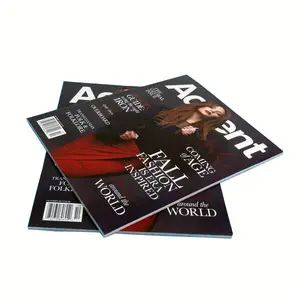
All categories
Featured selections
Trade Assurance
Buyer Central
Help Center
Get the app
Become a supplier

(20510 products available)














































Small run printing refers to the production of a small number of prints, usually fewer than 500, which is distinct from large-scale commercial printing. The following are some common types of small run printing machines.
The offset printing machine is a popular type of small-run printing press. The machine uses printing plates and offset cylinders to transfer ink to the printing surface. This printing method is widely used in commercial printing for producing high-quality prints in large quantities. It offers businesses the opportunity to produce high-quality, high-volume prints at a low cost per unit, making it an ideal choice for promotional materials, packaging, and labels.
Digital printing machines are an umbrella term that encompasses printing machines that employ digital technology to produce prints directly from digital files. They are ideal for small-scale printing projects due to their flexibility and cost-effectiveness. Digital printing machines are well-suited for use in many different industries, such as textiles, sign making, and packaging. Furthermore, digital printing machines offer the ability to make small modifications to the design without incurring extra costs, making them suitable for personalized and customized prints.
Flexography is a printing technique that utilizes a flexible relief plate. It is well-suited for printing on uneven or non-porous surfaces. Flexographic printing machines can print on a wide variety of materials, including plastic, metal, and paper, and can be used for labels, packaging, and other products. The machine is often used for small to medium print runs because it is cost-effective and can achieve high printing speeds.
Screen printing machines, also known as silk screen printing machines, work by forcing ink through a mesh screen onto the printing substrate. The screen is stencil-like, allowing the ink to pass through only in specific areas to form the desired image. They are suitable for various materials, including plastics, textiles, glass, and ceramics. Screen printing machines are often used for printing posters, T-shirts, signage, and other products. Because of the setup costs associated with creating screens, screen printing is best suited for small to medium print runs of the same design.
When looking for a small run printing machine for sale, it is important to check the specifications. This includes the following.
The speed at which the printer prints is usually given in pages per minute (ppm). The printing speed of a small-run printer can vary depending on the model and settings. This includes the resolution, color mode, and content of the print. Customers can compare the printing speed of different models to find one that meets their needs.
Resolution denotes the quality and sharpness of the printed text or image. It is shown in dots per inch (dpi). A higher resolution results in a clearer image but may reduce printing speed. Most small run printers have resolutions ranging from 600 dpi to 2400 dpi. The specific resolution of a printer may vary depending on the model and settings.
It is possible that a small-run printer may be compatible with different types of printing media. This includes paper, cardstock, labels, envelopes, and various specialty media. Depending on the model, a printer may have a maximum print width and thickness. It may also support different finishes and coatings for the printing media. Buyers can check the specifications of the printer to ensure it supports the required printing material.
Small-run printers use different types of ink, each with its own features and benefits. Common ink options include dye-based ink, pigment-based ink, solvent ink, and eco-solvent ink. The ideal ink to use depends on the application and the type of printing material. For example, dye-based ink is ideal for printing on paper, while solvent ink is great for printing on plastic and metal.
Performing regular maintenance on small-run printers is important to ensure their optimal performance and longevity. Depending on the type of printer, the following are some general maintenance tips that might help.
A small run digital press printer can play a significant role in businesses that require specialty and short-run prints. It can be used to print a wide range of products, including the following.
Businesses can use small-run digital printers to make various brochures and catalogs for their clients. This can be helpful when a business needs to update its marketing materials frequently, or it wants to create personalized product offers.
A business can use a digital press to print its business cards and stationery. The press allows the business to change and update its business cards and stationery to suit its current brand and marketing needs.
Businesses can use digital presses to print targeted direct mail pieces and postcards. This is effective in running marketing campaigns that require personalization and quick turnaround.
Small-run digital printers can be used to print small packaging items like boxes, bags, and labels. This can be especially helpful for smaller businesses that need to customize their packaging for different versions of their products.
Digital presses can print different kinds of signage and banners for businesses. This includes indoor signs, outdoor signs, and promotional banners, among others. The digital press allows businesses to customize their signage to suit their current marketing needs.
VDP is a direct marketing technique that uses digital printing to customize and personalize each printed piece with unique information from a database. It can be used to print personalized marketing materials like postcards, brochures, and letters, as well as event invitations and name badges.
Small-run digital presses can also be used to print various specialty prints, such as wedding invitations, greeting cards, and other personalized items. The digital nature of a digital press allows for cost-effective short runs without compromising quality.
When selecting small-run printing machines for customers, the following aspects should be considered:
Consider the types of items to be printed, such as business cards, labels, packaging, etc. Consider the required printing quality, colors, and materials. It is also important to evaluate the required printing quantities, as different machines have different production capacities. It is also important to evaluate the required printing quantities, as different machines have different production capacities. In addition, it is also important to estimate the frequency of work to ensure that the selected machine can meet the actual production needs.
There are various printing methods for small runs of items. For example, digital printers are suitable for customized printing, while screen printing is cost-effective for small batches of the same design. The selected printing method should match the customer's product type, design requirements, and budget.
Consider the key performance parameters of the printing machine, such as printing speed, resolution, color management, and compatibility with different printing materials. Ensure that the selected machine has stable and reliable performance, and can achieve the desired printing effect.
Consider the customer's budget and balance the machine's performance and cost to select a cost-effective solution. In addition to the initial investment, it is also important to consider the operating costs of the machine, such as ink consumption and maintenance expenses.
Choose a reliable supplier with a good reputation and technical support. Communicate with the supplier to understand the customer's needs and provide targeted recommendations. It is also necessary to compare different supplier options and equipment models to ensure that the selected machine can meet the customer's production needs.
Q1: What is the future of small run printing?
A1: The future of small run printing looks promising, with ongoing technological advancements catering to the evolving needs of various industries. As demand for personalized and customized products continues to increase, small-scale printing capabilities, such as digital printing and on-demand printing, are likely to further develop and improve.
Q2: What are the benefits of small run printing for businesses?
A2: Small run printing offers several benefits for businesses, including the ability to quickly test new ideas and concepts, cost-effectively produce limited editions or prototypes, and customize products to target specific market segments. Additionally, small-scale printing can help businesses minimize inventory storage costs by enabling on-demand production.
Q3: What are the key trends driving the small run printing market?
A3: The key trends driving the small run printing market include the growing demand for personalized and customized products, advancements in digital printing technologies, and increasing awareness of the environmental benefits of on-demand printing. Furthermore, the adoption of automation and integration of software solutions are enhancing the efficiency and scalability of small-scale printing operations.